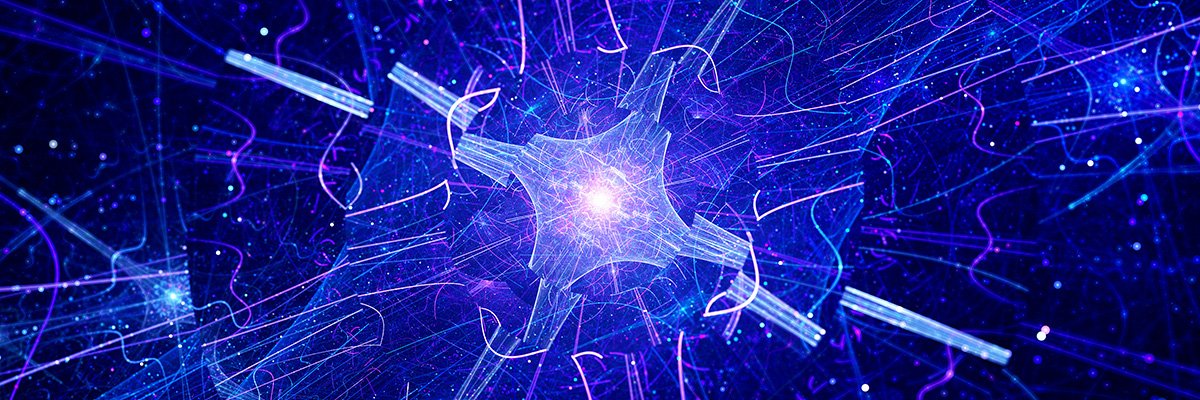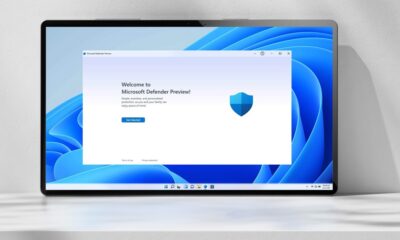Tech News
Deep dive into quantum-resistant cryptography for email security

Picture waking up one day to discover that all your confidential emails are suddenly an open book for anyone with a powerful enough computer. Sounds like a nightmare, right? Well, with the rapid advancement of quantum computing, despite the challenges involved, this scenario isn’t as far-fetched as you might think.
Once fully realized, quantum computers have the potential to crack many of the encryption methods we currently rely on to keep our digital communications safe. And let’s face it: email is still the backbone of our online interactions, both personal and professional.
So, what’s the solution? How do we maintain the confidentiality and integrity of email communications in a post-quantum world? The answer lies in quantum-resistant cryptography.
At its core, quantum computing applies the principles of quantum mechanics to process information. Instead of using bits (0s and 1s), quantum computers use units known as quantum bits or qubits.
One unique aspect of qubits is that they can exist in multiple states at the same time, thanks to a phenomenon called quantum superposition. It’s like being able to flip a coin and have it land on both heads and tails at the same time – but that’s not all. Qubits can also be entangled, meaning the state of one qubit can instantly affect the state of another, regardless of the distance between them.
So, how do quantum computers differ from classical computers? While classical computers excel at straightforward, sequential calculations, quantum computers shine at solving complex problems with multiple variables. They can explore countless possibilities simultaneously, making them ideal for tasks such as breaking encryption, modeling molecular structures, or optimizing complex systems.
The potential capabilities of fully realized quantum computers are extraordinary. They could revolutionize drug discovery, optimize financial models, enhance artificial intelligence, and, yes, crack many of our current encryption methods.
Impact of quantum computing on current encryption methods
Most email encryption today relies on public-key cryptography, with Rivest–Shamir–Adleman (RSA) and elliptic curve cryptography (ECC) being the most popular. These systems operate on the principle that some mathematical problems are very challenging for classical computers to solve.
For example, RSA’s security is based on the difficulty of factoring large numbers. It’s like trying to figure out which two numbers were multiplied together to get a really big number – easy to do in one direction, but a nightmare to reverse.
Quantum computers, with their ability to perform many calculations simultaneously, are poised to turn these “tough problems” into a walk in the park, rendering current encryption methods vulnerable.
A prime example of this vulnerability is Shor’s algorithm, which can factor large integers exponentially faster than the best-known algorithms running on classical computers. A sufficiently powerful quantum computer running Shor’s algorithm could break these encryption methods in minutes, compared to the billions of years it would take classical computers.
This capability poses a direct threat to RSA, which relies on the difficulty of factoring large numbers as its security foundation. Similarly, ECC and other encryption methods that depend on the hardness of the discrete logarithm problem are also at risk.
The implications for email security are immense, which is why the cybersecurity community is already hard at work developing quantum-resistant cryptography.
Understanding quantum-resistant cryptography
Quantum-resistant cryptography, also known as post-quantum cryptography, focuses on developing encryption methods that can withstand both classical and quantum computers. It relies on mathematical problems that are tough to crack for both classical and quantum machines.
Why not just use quantum encryption to combat quantum decryption? Unfortunately, while quantum key distribution is possible, it requires specialized hardware that’s not practical for widespread use, especially in something as ubiquitous as email. Instead, it’s easier to concentrate on creating classical algorithms that can resist quantum attacks.
Quantum-resistant algorithms for email security
Several promising algorithms have emerged in the fight against quantum threats to email security. These include:
- Lattice-based cryptography: These algorithms rely on the hardness of problems related to lattice structures in high-dimensional spaces. An example of a lattice-based algorithm is Crystals-Kyber. It’s fast, has reasonably small key sizes, and is versatile enough for various applications, including email encryption.
- Hash-based cryptography: This approach utilizes cryptographic hash functions to construct secure digital signatures. They’re not the most efficient, with large signature sizes, but they’re trusted due to their simplicity and the extensive study of hash functions. For email, they’re more suitable for signing than encryption.
- Code-based cryptography: This approach uses error-correcting codes, typically used to ensure accurate data transmission. In cryptography, they’re flipped on their head to create hard-to-solve problems. The McEliece system is a classic example. However, these algorithms tend to have large key sizes, which can be a drawback for email systems where efficiency is key.
- Multivariate polynomial cryptography: These algorithms use systems of multivariate polynomials to create complex mathematical puzzles. They’re known for fast signature verification, which could be great for quickly checking the authenticity of emails. However, they often have large key or signature sizes.
For email security, we’re likely to see a mix of these approaches. Lattice-based algorithms such as IBM’s z16 might handle the asymmetric part (like key exchange), while beefed-up symmetric algorithms secure the actual message content. Hash-based signatures could verify the sender’s identity.
Integration challenges
While technically possible, integrating quantum-resistant cryptography into existing email systems comes with its fair share of headaches.
Most email systems are built around current encryption standards such as RSA and ECC. Swapping these out for quantum-resistant algorithms requires significant changes to the underlying infrastructure, potentially breaking interoperability with older systems.
Some post-quantum algorithms come with larger key sizes and slower processing times. In a world where we expect our emails to zip across the globe in seconds, this could lead to noticeable delays. Additionally, with potentially larger keys and new algorithms, we need robust systems to generate, distribute, and store these keys securely.
Furthermore, properly testing quantum-resistant cryptographic methods and their effectiveness might be time-consuming, but it’s still more reliable and efficient compared to classic data redaction techniques, as even script kiddies can bypass it nowadays if they get their hands on sensitive emails.
Strategies for transitioning to quantum-resistant cryptography
Start by assessing your organization’s readiness. Take stock of your current encryption methods, identify vulnerable systems, and determine the potential impact of a quantum breach. Additionally, determine the resources required for a seamless transition.
As part of assessing your organization’s readiness, evaluate your digital asset management system, especially if your organization deals with large volumes of multimedia email attachments. This ensures all digital assets are properly cataloged and provides clarity on the types of data being shared via email, how frequently, and by whom.
For example, highly sensitive documents might require immediate implementation of the strongest quantum-resistant encryption, while less critical communications could be transitioned more gradually.
Begin with the most critical systems and work your way through your infrastructure. For instance, start with email signatures, then move to key exchange protocols, and finally to full message encryption. This phased approach minimizes disruptions and allows for adjustments based on real-world feedback and performance metrics.
Lastly, don’t overlook the human element in email security. Employee training and awareness are crucial. Your team needs to understand the why and how of these new security measures. Awareness programs and hands-on training ensure that staff are equipped to handle the transition effectively, maintain security practices, and minimize potential risks.
Broader implications of quantum-resistant cryptography
The shift to quantum-resistant cryptography will have far-reaching consequences – not just in email security, but in many other domains.
In terms of global cybersecurity, quantum-resistant cryptography is set to redefine global cybersecurity power dynamics. Countries and organizations that get ahead in developing and implementing quantum-resistant methods could gain a significant edge, potentially altering the balance of cyber power and influencing geopolitical relations.
Quantum-resistant cryptography will also be crucial for protecting national security interests. Government agencies and military operations heavily rely on secure communications, so transitioning to post-quantum cryptographic standards is vital to safeguarding sensitive information from future quantum-based cyber threats.
When it comes to data privacy, quantum-resistant cryptography will become the new gold standard. In a world where quantum computers could potentially crack current encryption methods, quantum-resistant algorithms will perhaps be the only way to maintain the privacy and confidentiality of personal and corporate data, and uphold trust in digital communications.
Wrapping up
The quantum age will undoubtedly revolutionize computing, but it also threatens to upend the very foundations of our current cybersecurity infrastructure.
The good news? We’re not defenseless. Quantum-resistant cryptography offers a gateway to a new era of digital security, where our emails – and all our digital communications – can remain private and secure, no matter what computational advances the future holds.
-

 Destination9 months ago
Destination9 months agoSingapore Airlines CEO set to join board of Air India, BA News, BA
-

 Breaking News10 months ago
Breaking News10 months agoCroatia to reintroduce compulsory military draft as regional tensions soar
-

 Gadgets4 months ago
Gadgets4 months agoSupernatural Season 16 Revival News, Cast, Plot and Release Date
-

 Tech News1 year ago
Tech News1 year agoBangladeshi police agents accused of selling citizens’ personal information on Telegram
-

 Productivity12 months ago
Productivity12 months agoHow Your Contact Center Can Become A Customer Engagement Center
-

 Gadgets4 weeks ago
Gadgets4 weeks agoFallout Season 2 Potential Release Date, Cast, Plot and News
-

 Breaking News10 months ago
Breaking News10 months agoBangladesh crisis: Refaat Ahmed sworn in as Bangladesh’s new chief justice
-

 Toys12 months ago
Toys12 months ago15 of the Best Trike & Tricycles Mums Recommend






















